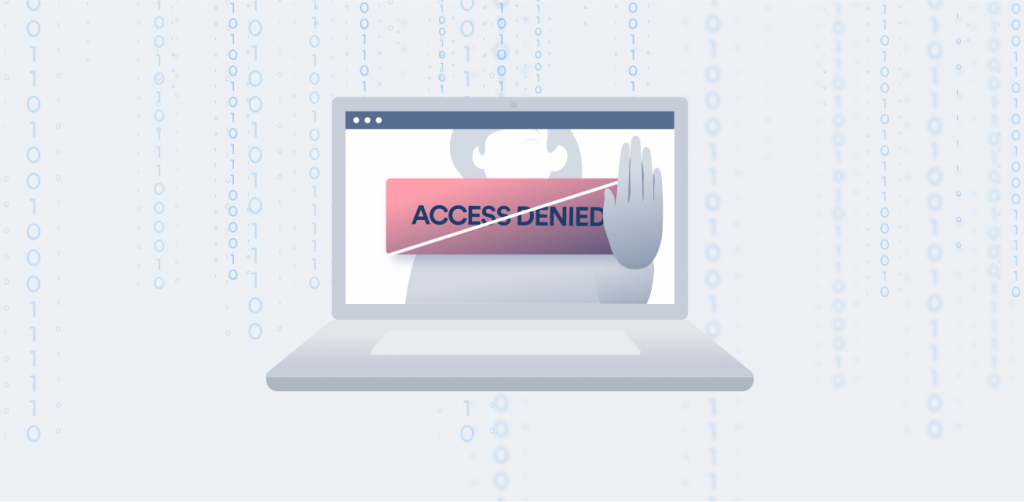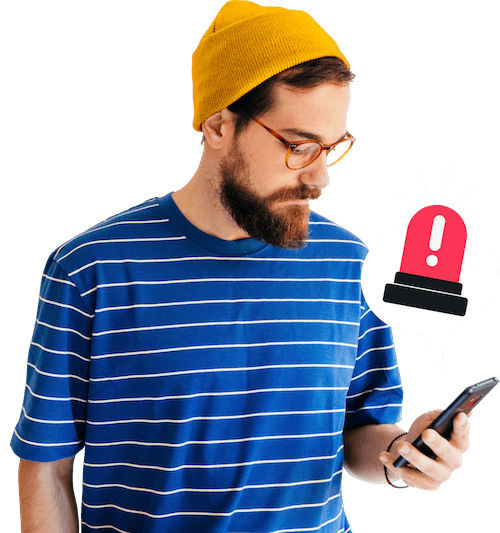
Many ISPs (Internet Service Providers) across the world block websites – some for legitimate reasons, some because of the growing online censorship. While one can argue that there are sometimes good reasons to block sites, it can ultimately lead to over-restricting and even censorship. In this article, we’ll go over the types of censorship you may come across and how to easily overcome them.
with Surfshark Alert
How to check if ISP is blocking a website?

There are various parties that may be blocking websites. So how do you know it’s your ISP blocking a website or another party? Here’s how to check:
Step 1. Try to access the website.
Step 2. Pay attention to the message you get.
Message | What it means |
|---|---|
This content is not available in your country | The website owner is most likely blocking the website. |
Standard internet error message | The website is down or blocked. |
Step 3. Use a website like isup.me to check whether the website is down for everyone or just you. Pay attention to the status.
Status | What it means |
|---|---|
Website is down | The website is down for everyone. |
It’s just you. [Website] is up. | The website is blocked by your ISP. |
The good news is that there are ways to bypass ISP blocks. They depend on the method that your provider is using to deny access.
How to remove ISP blocking – and do it successfully
You can bypass ISP blocking (but not remove the fact that they’re blocking stuff) by using the right tool for the right issue. We will discuss what to do if your ISP is engaging in:
- DNS blocking
- IP blocking
- Deep packet inspection
What’s DNS blocking & how to bypass it
DNS (Domain Naming System) is like a phonebook for devices. You enter surfshark.com into your browser, your device asks the DNS (usually provided by your ISP) for the IP, DNS replies with a 104.18.120.34, and then the device can connect to that IP address. In the case of a DNS block, a DNS wouldn’t reply with anything.
You can bypass DNS blocking by:
Changing your DNS provider |
|
|---|---|
Using a smart DNS service |
|
Using a proxy |
|
Using a VPN |
|
What’s IP blocking & how to bypass it
IP address blocking happens when a network is configured to reject access for specific IP addresses. Your ISP may be using IP blocking by simply monitoring your connection to see if you want to access a certain IP address. However, with the right tools, it’s easy to bypass IP blocking.
You can bypass IP blocking by:
Using a proxy |
|
|---|---|
Using a VPN |
|
What’s Deep Packet Inspection & how to bypass it
Deep Packet Inspection, otherwise known as DPI, is a method that allows examining the data traveling via networks. It’s as if somebody opens a letter you’re sending out and reads what you wrote, which is why DPI does nothing for your privacy.
DPI is resource intensive, so only the most censorship-prone countries and ISPs would ever use them. As they read your datastream, no DNS or proxy games can really hide you from it.
The only way to bypass DPI blocks is by:
Using a VPN |
|
|---|
How does a VPN unblock sites?

Unblocking the site depends on how the website is blocked:
- For DNS blocks, a VPN like Surfshark just uses their own private DNS.
- For IP blocks, once you connect to a VPN, your data is routed via the server, so your ISP sees you connecting to the IP of the server, not the blocked website.
- For DPI blocks, a VPN encrypts the data you transmit and receive online, and DPI can’t pierce that encryption.
How does changing DNS unblock sites?
A DNS transforms human-readable website URLs (e.g., surfshark.com) into IP addresses that devices can use (e.g., 104.18.120.34).
Your regular DNS service is most likely provided by your ISP. As your ISP is likely a local company, it falls under the local law. If the local law tells it to block a website, your ISP can just block it at a DNS level.
So if you use a different DNS provider (e.g., Google), your DNS query goes to their DNS. And if that new DNS provider doesn’t block the website, it provides the IP address your device requested.
Do I need a VPN, or is changing DNS enough?
It depends on both your needs and the block in question:
- If you need to access something blocked at the DNS level and you don’t care if anyone sees it, a DNS switch is enough.
- If your country is engaging in some serious censorship and you’d prefer to hide what you’re doing, you need a VPN.
Bonus tip: A VPN is a very handy online privacy tool aside from unlocking websites.
Can your internet service provider see what sites you are on?
Yes. Your internet service provider can access your browsing history and see what you’re downloading, how much time you spend on a website, and what device you’re using. Well, unless you are using a VPN, which limits information visible to your ISP.
What can your ISP do with that information?
- Make a digital portrait out of you and sell your browsing habits to advertisers.
- Restrict access to specific websites and impose censorship.
But incognito mode protects your privacy, right?
Not really. Going incognito means that the browser isn’t storing your browsing history, login details, and cookies. However, it doesn’t stop ISP tracking.
They don’t hide it, though. When you open the incognito window in Chrome, all this information is clearly articulated:
To stop your ISP from snooping on your browsing activity, you need a VPN or a Google Chrome VPN extension. It’s the most effective way to stop non-consensual online tracking.
Overcome blocks with a VPN
Online blocking and censorship may seem daunting, especially if you’re not inclined to learn all the technical details that make blocking and unblocking sites possible. However, thanks to easy-to-use DNS changers and VPNs, you don’t have to get an IT degree to explore the open internet. All it takes is downloading an app for your device, and you’re ready to go.


